Christian Ratsch
See book keywords and concepts |
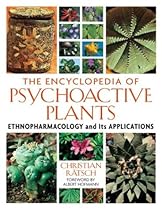 Paulus and Ding 1987,123*; Schneider 1974,2:54*)
Ephedra equisetina Bunge mu-ts'e ma-huang
Ephedra intermedia Schrenk et Meyer ma-huang
Ephedra shennungiana Tang ma-huang
Ephedra sinica Stapf ts'ao ma-huang
"The roots of chinese medicine lie in the shamanic tradition of the Shang and Zhou periods (between the sixteenth and first centuries b.c.e.), a tradition associated with magic and geomancy that is now regarded as superstition. Paulus and Ding 1987,123*; Schneider 1974,2:54*)
Ephedra equisetina Bunge mu-ts'e ma-huang
Ephedra intermedia Schrenk et Meyer ma-huang
Ephedra shennungiana Tang ma-huang
Ephedra sinica Stapf ts'ao ma-huang
"The roots of chinese medicine lie in the shamanic tradition of the Shang and Zhou periods (between the sixteenth and first centuries b.c.e.), a tradition associated with magic and geomancy that is now regarded as superstition. |
| Nees] (Araliaceae)—ginseng (panacea)
Ginseng is the most renowned medicinal plant in Asia and has become the very symbol of traditional Asian or chinese medicine and phytotherapy. The plant has also been called the mandrake of the East and the Chinese mandrake (cf. Mandragora ojficinarum, Phytolacca acinosa) (Kirchdorfer 1981, 30 ff.). These names may be the origin for ginseng's reputation as a psychoactive plant (Schultes and Hofmann 1980, 367*). Ginseng is one of the most well-known aphrodisiacs and is also regarded as a panacea (Kimmens 1975). |
| The genus Panax (ginseng) in chinese medicine. Economic Botany 30:11-28.
Kappstein, Stefan. 1980. Das Buch vom Ginseng. Bern: Morzsinay Verlag.
Kimmens, Andrew C, ed. 1975. Tales of ginseng. New York: William Morrow and Co.
Kirchdorfer, Anton Maria. 1981. Ginseng: Legende und Wirklichkeit. Munich: Droemer Knaur.
Lee, Florence C. 1996. Facts about ginseng: The elixir of life. Seoul: Hollym.
Pritts, Kim Derek. 1995. Ginseng: How to find, grow, and use America's forest gold. Mechanicsburg, Pa.: Stackpole Books.
Phrygilanthus eugenioides (L.) H.B.K. |
| The pharmacopoeia of chinese medicine states that the alkaloid content may not be less than 0.8% (Hiller 1993, 51).
In Germany, Ephedra herbage and especially preparations made with it are available only with a prescription. The International Olympic Committee and the German Sport Federation have included medicaments containing ephedrine in their lists of doping agents as prohibited stimulants (Hiller 1993, 54). |
| Psychoactive Material
— Leaves
— Seeds
— Roots
— Flowers (these are used in chinese medicine, where they are known as yangjin hua; Lu 1986, 82*)
Because the alkaloid content of the entire plant increases until the plant reaches the end of its reproductive phase, the raw drug is best collected during or after the end of fruit development (Afsharypuor et al. 1995).
Preparation and Dosage
A narcotic or inebriating drink is prepared by adding equal parts of Datura metel seeds and/or leaves and hemp (Cannabis sativa) flowers to wine (Perry and Metzger 1980, 392*). |
| American Journal of chinese medicine 11 (1-4): 74-76.
Khadem, H. el-, and Y. S. Mohammed. 1958.
Constituents of the leaves of Psidium guajava. II: Quercetin, avicularin and guaijaverin. Journal of the Chemical Society (London): 3320-23.
Lutterodt, George D. 1989. Inhibition of gastrointestinal release of acetylcholine by quercetin as a possible mode of action of Psidium guajava leaf extracts in the treatment of acute diarrhoeal disease. Journal of Ethnopharmacology 25:235-47.
-. 1992. |
Schuyler W. Lininger, Jr. DC
See book keywords and concepts |
 Chinese medicine as a treatment for angina.
Are There Any Side Effects or Interactions? Refer to the individual herb for information about any side effects or interactions.
Checklist for Angina
Ranking
Nutritional Supplements
Herbs
Primary
Carnitine (p. 279) Coenzyme Q|3 (p. 283)
Hawthorn (p. 433)
Secondary
Arginine (p. 268) Vitamin E (p. 344)
Other
Bromelain (p. 276) Fish oil (p. 294) (EPA/DHA [p. 287])
Kudzu (p. 438)
See also: Atherosclerosis (p. 17)
Anxiety
Anxiety describes any feeling of worry or dread, usually about potential events that might happen. Chinese medicine as a treatment for angina.
Are There Any Side Effects or Interactions? Refer to the individual herb for information about any side effects or interactions.
Checklist for Angina
Ranking
Nutritional Supplements
Herbs
Primary
Carnitine (p. 279) Coenzyme Q|3 (p. 283)
Hawthorn (p. 433)
Secondary
Arginine (p. 268) Vitamin E (p. 344)
Other
Bromelain (p. 276) Fish oil (p. 294) (EPA/DHA [p. 287])
Kudzu (p. 438)
See also: Atherosclerosis (p. 17)
Anxiety
Anxiety describes any feeling of worry or dread, usually about potential events that might happen. |
| Stress
Historical or Traditional Use
Asian ginseng has been a part of chinese medicine for over 2,000 years. The first reference to the health-enhancing use of Asian ginseng dates to the first century A.D., in which the writer mentions ginseng's use as follows: "It is used for repairing the five viscera, quieting the spirit, curbing the emotion, stopping agitation, removing noxious influence, brightening the eyes, enlightening the mind and increasing wisdom. Continuous use leads one to longevity with light weight. |
| Referred to as ci wu jia in chinese medicine, it was used to prevent respiratory tract infections as well as colds and flu. It was also believed to provide energy and vitality. In Russia, eleuthero was originally used by people in the Siberian Taiga region to increase performance and quality of life and to decrease infections.
In more modern times, eleuthero's ability to increase stamina and endurance led Soviet Olympic athletes to use it to enhance their training. Explorers, divers, sailors, and miners used eleuthero to prevent stress-related illness. |
Carol Krucoff and Mitchell Krucoff, M.D.
See book keywords and concepts |
 Traditional chinese medicine views physical activity as essential to the proper flow of chi, or life energy, throughout the body, which proponents credit with boosting health and preventing disease. When chi is blocked by problems such as poor posture, nervous tension, or sedentary existence, illness results. That's why millions of Chinese greet the dawn by performing ancient self-healing exercises designed to develop and direct the body's chi, such as tai chi and qi gong. Traditional chinese medicine views physical activity as essential to the proper flow of chi, or life energy, throughout the body, which proponents credit with boosting health and preventing disease. When chi is blocked by problems such as poor posture, nervous tension, or sedentary existence, illness results. That's why millions of Chinese greet the dawn by performing ancient self-healing exercises designed to develop and direct the body's chi, such as tai chi and qi gong. |
Schuyler W. Lininger, Jr. DC
See book keywords and concepts |
 It is also used in modern chinese medicine as a treatment for angina pectoris.
Active Constituents
Kudzu root is high in isoflavones, such as daidzein, as well as isoflavone glycosides, such as daidzin and puerarin. Depending on its growing conditions, the total isoflavone content varies from 1.77 to 12.0%, with puerarin in the highest concentration, followed by daidzin and daidzein.2
As is the case with other flavonoid-like substances, the constituents in kudzu root are associated with improved microcirculation and blood flow through the coronary arteries. It is also used in modern chinese medicine as a treatment for angina pectoris.
Active Constituents
Kudzu root is high in isoflavones, such as daidzein, as well as isoflavone glycosides, such as daidzin and puerarin. Depending on its growing conditions, the total isoflavone content varies from 1.77 to 12.0%, with puerarin in the highest concentration, followed by daidzin and daidzein.2
As is the case with other flavonoid-like substances, the constituents in kudzu root are associated with improved microcirculation and blood flow through the coronary arteries. |
Andrew Chevallier
See book keywords and concepts |
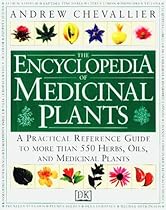 It is thought to be the oldest system of healing in the world, predating ^4^^^ even chinese medicine. Today it is actively promoted by the government as an alternative to conventional Western medicine.
The name Ayurveda derives from two Indian words: ayur, meaning life, and veda, meaning knowledge or science. Ayurvedic medicine is more than a system of healing. It is a way of life encompassing science, religion, and philosophy that enhances well-being, increases longevity, and ultimately brings self-realization. It is thought to be the oldest system of healing in the world, predating ^4^^^ even chinese medicine. Today it is actively promoted by the government as an alternative to conventional Western medicine.
The name Ayurveda derives from two Indian words: ayur, meaning life, and veda, meaning knowledge or science. Ayurvedic medicine is more than a system of healing. It is a way of life encompassing science, religion, and philosophy that enhances well-being, increases longevity, and ultimately brings self-realization. |
Doreen Virtue, Ph.D.
See book keywords and concepts |
 The foods that were labeled "hot" (the chinese medicine description of a stimulant, not the flavor) centuries ago, are the very foods that today are called vasoconstrictors, or stimulants.
3. One-on-one interviews, conducted in clinical sessions and at my workshops. By studying thousands of women and men, I was able to correlate their food cravings to their emotional issues and mood preferences. I also kept detailed records of my own food cravings and corresponding moods. The foods that were labeled "hot" (the chinese medicine description of a stimulant, not the flavor) centuries ago, are the very foods that today are called vasoconstrictors, or stimulants.
3. One-on-one interviews, conducted in clinical sessions and at my workshops. By studying thousands of women and men, I was able to correlate their food cravings to their emotional issues and mood preferences. I also kept detailed records of my own food cravings and corresponding moods. |
| Amazingly, all three of these information sources—modern scientific research, ancient chinese medicine beliefs, and my personal interviews—draw similar conclusions about which foods correspond to which emotions.
Food Cravings Are Key
Everyone gets hungry, of course. But beyond normal appetite, and way beyond Thanksgiving eating binges, are overwhelming food cravings that are incessant, annoying, and invasive. What's more, these food cravings destroy well-intentioned nutrition and dieting plans.
Here's how I define a food craving: An obsessive desire for a specific type of food. |
Gary Null
See book keywords and concepts |
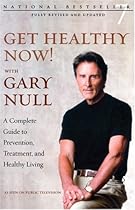 Michael Tierra is a consultant who has 25 years of experience with chinese medicine. His East West Clinic is located in Santa Cruz, California. He is the founder of the American Herbalists Guild and has written a number of books on herbal medicine, including Chinese Traditional Herbal Medicine.
He told me told me about a patient he was seeing. "I had a gentleman about 70 years old, who had tried Viagra with poor results. He would get an erection but he had no desire for his partner. I had him check on the drugs he was taking."
788 Get Healthy Now!
Dr. Michael Tierra is a consultant who has 25 years of experience with chinese medicine. His East West Clinic is located in Santa Cruz, California. He is the founder of the American Herbalists Guild and has written a number of books on herbal medicine, including Chinese Traditional Herbal Medicine.
He told me told me about a patient he was seeing. "I had a gentleman about 70 years old, who had tried Viagra with poor results. He would get an erection but he had no desire for his partner. I had him check on the drugs he was taking."
788 Get Healthy Now!
Dr. |
| People will say, T haven't had enough sleep,' but it goes beyond that. In chinese medicine, it says that the kidneys are not functioning optimally, so the blood isn't being cleansed."
She goes on describe various factors that can drain the kidneys. "Cold can deplete the kidneys. Many people can't tolerate cold. This is so because in the winter time, the kidney's function becomes suppressed, much the same way as the sap in a tree runs to the core and into the roots. When people have a compromised kidney situation, where it isn't functioning optimally, they can't stand the cold weather. |
| NOURISHING THE KIDNEYS Registered nurse and acupuncturist Abigail Rist-Podrecca explains sexual dysfunction from an Eastern point of view: "Chinese medicine looks to the root of the cause, rather than just the symptoms, and the root seems to be the kidney. The kidneys are called the roots of life. Everything stems from the kidney, they say."
Weak kidney function can be diagnosed in Oriental medicine in multiple ways, including facial diagnosis: "Under the eye is the thinnest tissue in the entire body," explains Rist-Podrecca. "You can see through the skin there. |
| Gorman agrees that clinical studies help confirm a diagnosis, she adds that Asian physicians are trained to accurately detect anemia and other blood disorders through observation: "In chinese medicine, you examine the body. Look at your tongue. Is it pale? Look at your lips. Are they pale? See if the mucous membranes under the eyes are pale. These signs indicate whether or not you are anemic."
Diet and Nutritional Remedies_
Green, leafy vegetables are high in iron and folic acid. It is best to purchase organic vegetables, as pesticides interfere with absorption. |
Dr. Gary Null
See book keywords and concepts |
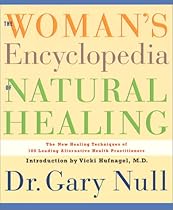 TRADITIONAL CHINESE PERSPECTIVE
Traditional chinese medicine sees sexual abuse as an attack on one's energy field. Left uncorrected, this results in physical as well as psychic disturbances. Phyllis Bloom from the Center for Acupuncture and Healing Arts in lower Manhattan describes imbalances which commonly occur, and tells how acupuncture, Chinese herbs, and essential oils can help to restore equilibrium and health: "There are three levels of energy in the body: the protective level, the nutritive level, and the constitutional level. With sexual abuse, any and all of these can be affected. TRADITIONAL CHINESE PERSPECTIVE
Traditional chinese medicine sees sexual abuse as an attack on one's energy field. Left uncorrected, this results in physical as well as psychic disturbances. Phyllis Bloom from the Center for Acupuncture and Healing Arts in lower Manhattan describes imbalances which commonly occur, and tells how acupuncture, Chinese herbs, and essential oils can help to restore equilibrium and health: "There are three levels of energy in the body: the protective level, the nutritive level, and the constitutional level. With sexual abuse, any and all of these can be affected. |
John Lauritsen
See book keywords and concepts |
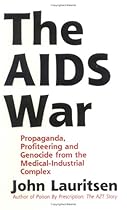 With regard to treatment options, PH adopt a "free marketplace of ideas" approach, with special emphasis on therapies which are commonly referred to as "alternative" or "holistic"; these would include nutritional therapies, homeopathy, chinese medicine, herbal therapies, and acupuncture. Some people in PH have strong opinions, and do not hesitate to express them, but no one is obliged to go along with them. For example, Cass Mann is opposed to eating meat, fish or poultry, on ethical grounds and because of the various hormones, antibiotics and other adulterants found in flesh foods. With regard to treatment options, PH adopt a "free marketplace of ideas" approach, with special emphasis on therapies which are commonly referred to as "alternative" or "holistic"; these would include nutritional therapies, homeopathy, chinese medicine, herbal therapies, and acupuncture. Some people in PH have strong opinions, and do not hesitate to express them, but no one is obliged to go along with them. For example, Cass Mann is opposed to eating meat, fish or poultry, on ethical grounds and because of the various hormones, antibiotics and other adulterants found in flesh foods. |
Nicola Reavley
See book keywords and concepts |
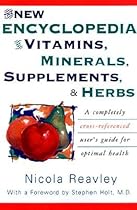 Both types of ginseng have a long history of use in chinese medicine as tonics. They enhance the body's ability to cope with stress, improve energy metabolism, lower blood sugar, boost immunity, enhance liver function, and regulate cell growth.
Uses
The anti-fatigue and anti-stress properties of both types of ginseng are used to increase physical and mental performance in people who are debilitated and suffering from stress. Both types of ginseng have a long history of use in chinese medicine as tonics. They enhance the body's ability to cope with stress, improve energy metabolism, lower blood sugar, boost immunity, enhance liver function, and regulate cell growth.
Uses
The anti-fatigue and anti-stress properties of both types of ginseng are used to increase physical and mental performance in people who are debilitated and suffering from stress. |
| Astragalus (Astragalus membranaceus)
One of the best known herbs used in chinese medicine, astragalus strengthens the digestion and stimulates the immune system. It also aids adrenal gland function, acts as a diuretic and dilates blood vessels.
Uses
Astragalus can be used to boost the immune system in people who frequently suffer from infections such as colds. It can also be used in convalescence and to aid in cancer treatment and recovery from chemotherapy.
Cautions
Astragalus shoudl not be used in cases of acute infections or fevers. |
Rebecca Wood
See book keywords and concepts |
 Health Benefits Licorice is a soothing, moist, sweet root that has a positive action on all organs and so is used as an energy tonic in chinese medicine. It is a mild sedative, is anti-inflammatory, controls coughing, and has hormonal effects for women. It detoxifies and protects the liver and inhibits breast, colon, and prostate cancer. Licorice treats chronic hepatitis and immune deficiency disease; it is used for arthritis, allergic complaints, asthma, and Addison's disease. Health Benefits Licorice is a soothing, moist, sweet root that has a positive action on all organs and so is used as an energy tonic in chinese medicine. It is a mild sedative, is anti-inflammatory, controls coughing, and has hormonal effects for women. It detoxifies and protects the liver and inhibits breast, colon, and prostate cancer. Licorice treats chronic hepatitis and immune deficiency disease; it is used for arthritis, allergic complaints, asthma, and Addison's disease. |
Berkeley Holistic Health Center and Shepherd Bliss
See book keywords and concepts |
| Since then, he has undertaken independent studies in chinese medicine, acupuncture, nutrition, herbology, and metaphysics which has led him to practice what he calls Integrated Medicine in his San Francisco Bay area offices. This article on Seasonal Diet is an outgrowth of his book which is in its fourth printing and has been translated into both German and Spanish. Dr. Haas is a lecturer and health educator in addition to his private practice.
Eating Poorly, Eating Well
Peter Ways, M.D. |
Schuyler W. Lininger, Jr. DC
See book keywords and concepts |
 Historical orTraditional Use
Traditional chinese medicine has recommended ginger for over 2,500 years. It is used for abdominal bloating, coughing, vomiting, diarrhea, and rheumatism. Ginger is commonly used in the Ayurvedic and Tibb systems of medicine for the treatment of inflammatory joint diseases, such as arthritis.
Active Constituents
The dried rhizome of ginger contains approximately 1 to 4% volatile oils. These are the medically active constituents of ginger, and they are also responsible for ginger's characteristic odor and taste. Historical orTraditional Use
Traditional chinese medicine has recommended ginger for over 2,500 years. It is used for abdominal bloating, coughing, vomiting, diarrhea, and rheumatism. Ginger is commonly used in the Ayurvedic and Tibb systems of medicine for the treatment of inflammatory joint diseases, such as arthritis.
Active Constituents
The dried rhizome of ginger contains approximately 1 to 4% volatile oils. These are the medically active constituents of ginger, and they are also responsible for ginger's characteristic odor and taste. |
Bill Gottlieb
See book keywords and concepts |
 Each acupressure point is identified by the abbreviation of its meridian and a specific number. (In chinese medicine, the points have poetic names such as Sea of Tranquillity, Wind of Heaven and Welcoming Perfume.) So LI 4, for example, means point 4 on the large intestine meridian, while St 36 is point 36 on the stomach meridian. (For a list of these abbreviations, see "Shorthand for the Meridians.")
Shorthand for the Meridians
I n this book, the names of the 14 major meridians, or energy channels, have been abbreviated. Here they are. Each acupressure point is identified by the abbreviation of its meridian and a specific number. (In chinese medicine, the points have poetic names such as Sea of Tranquillity, Wind of Heaven and Welcoming Perfume.) So LI 4, for example, means point 4 on the large intestine meridian, while St 36 is point 36 on the stomach meridian. (For a list of these abbreviations, see "Shorthand for the Meridians.")
Shorthand for the Meridians
I n this book, the names of the 14 major meridians, or energy channels, have been abbreviated. Here they are. |
Ronald L. Hoffman, M.D.
See book keywords and concepts |
 Well, we are now beginning to find that many of the nodes of the autonomic nervous system correspond to the energy nodes of chinese medicine.
The autonomic nervous system — our view of the body's energy control system — is the branch of the nervous system that governs involuntary body functions like breathing, heart rate, blood pressure, balance, temperature, the preferential flow of blood to organs and muscles, digestion, mucus secretions, and sexual functions, to name but a few. What can happen when the autonomic nervous system goes awry? Well, we are now beginning to find that many of the nodes of the autonomic nervous system correspond to the energy nodes of chinese medicine.
The autonomic nervous system — our view of the body's energy control system — is the branch of the nervous system that governs involuntary body functions like breathing, heart rate, blood pressure, balance, temperature, the preferential flow of blood to organs and muscles, digestion, mucus secretions, and sexual functions, to name but a few. What can happen when the autonomic nervous system goes awry? |
| Their training and examination requirements are considered by many to be far more rigorous than those applied to physicians —and many Asian lay acupuncturists have had the added benefit of initial training in traditional chinese medicine. (See the Resources section at the end of this book for more information.)
Trigger Point Therapy
Trigger point therapy first came into the public eye when Dr. Janet Travell used it to treat President John F. Kennedy for his chronic back pain. |
| We also gave her Chinese ginseng, a traditional treatment for menopause in chinese medicine.
Eighteen months later we sent Sarah for another bone density test. The radiologist sent back a query to me, commenting that I'd neglected to mention what amount of estrogen this woman was taking. When I told him she was not on hormone replacement or any drugs, he said, "This is the darnedest thing, because Sarah has had about a six to eight percent enhancement of her bone density, and that's a sizable amount for such a short period of time. |
| Premenopause
In chinese medicine, there is an understanding that women undergo a distinct, prolonged premenopausal stage. Chinese doctors understand this as a change in what they call the kidney energy, which is the reproductive, hormonal energy of the body. They theorize that this change in energy allows certain symptoms to appear, such as intensified allergies or respiratory problems, achy body, hot flashes, anxiety, or depression. We too are beginning to identify premenopausal symptoms that relate to excess estrogen or lowered estrogen during this time. |












